Last night, we and the rest of the world were witnesses to an event that only happens a few times per century, a super blood moon lunar eclipse. To give you an idea of the infrequency of this event, the last one happened before Mathieu and I were born and the next one won’t happen until 2033!
During a super blood moon lunar eclipse, the moon is at the place in its orbit where it’s closest to earth, and appears 14% larger and 30% brighter than usual. The reason it is called a “blood moon” is because at the height of the eclipse, the moon takes on a deep red hue caused by the sun’s rays being reflected onto its surface.
Unlike a solar eclipse, a lunar eclipse lasts much of the night. This year’s event began at around 1:10 a.m. (BST) and was fully emerged in the earth’s shadow by 3:11 a.m. (BST). By 6:24 a.m. (BST) the show had come to a close.
Since the longest lenses we had on hand were the Lumix 35-100mm f/2.8 and 14-140mm f/3.5-5.6, we popped them on the GX8 and tried our hand at shooting the first part of the eclipse (following two very large cups of coffee and a three hour nap)!
Helpful Tips:
- Use a tripod for maximum stability.
- When shooting the moon with a mirrorless camera, it is always a good idea to turn on the constant preview option in the menu. Doing so will give you an actual preview of your exposure and thus a clearer view of the moon. On the Panasonic GX8, it can be found in the Custom menu on page 5/9. If you do not activate this option, all you will see is a bright featureless circle.
- Use manual focus. This will ensure that your focus does not change during the eclipse.
- Enable magnification and peaking to help bring the moon into focus.
During the first stage, we opted for the 14-140mm (28-280mm equivalent) since it is the longer of the two. The moon was extremely bright, allowing us to use ISO 200, f/5.6 and shutter speeds between 1/200s and 1/320s.
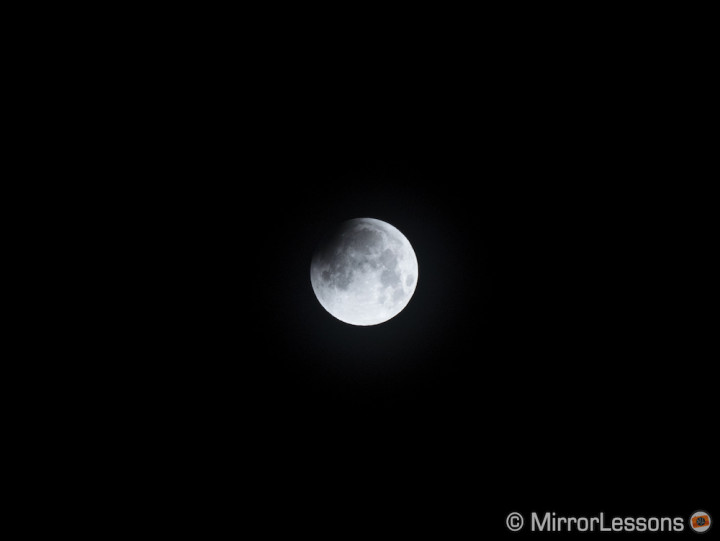
As it took on a crescent shape, we had to raise the ISO to 800. Anything beyond this resulted in an unacceptable deterioration in detail on the moon’s surface.
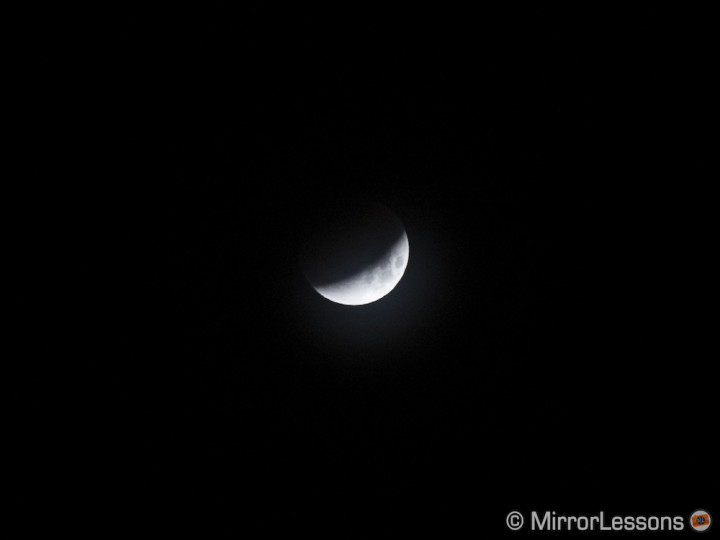
By the time the earth’s shadow had completely enshrouded the moon, we had to switch to the 35-100mm to take advantage of its f/2.8 aperture. To capture as much detail as possible, we kept the ISO at 800 and reduced the shutter speed to 0.4s.
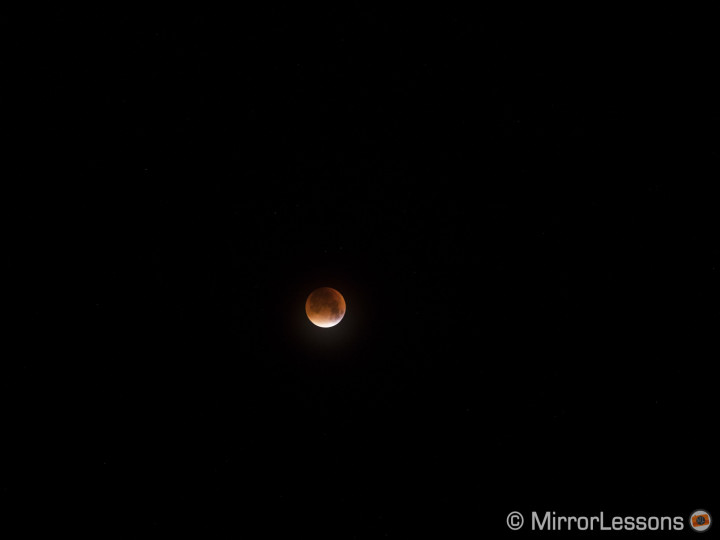
Knowing that the Panasonic GX8 has a 20MP sensor, we felt comfortable cropping the images in post production to centre the moon and eliminate the excess space around it.
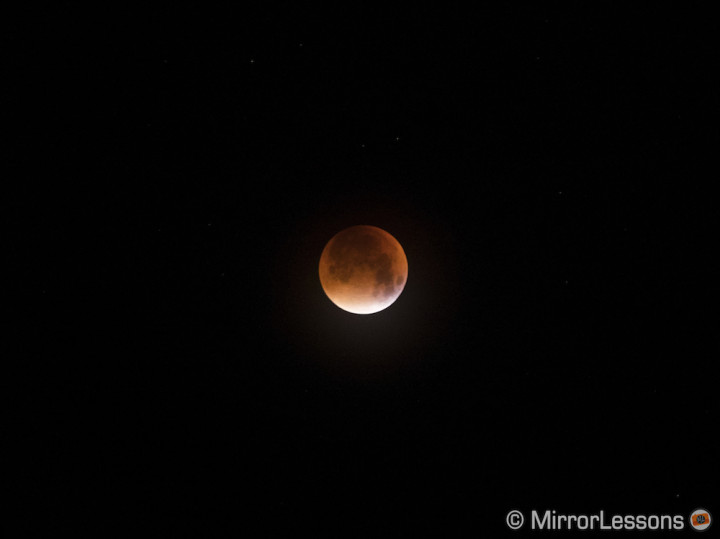
Below you can find a composite of the moon as it transitions through the first half of the eclipse.
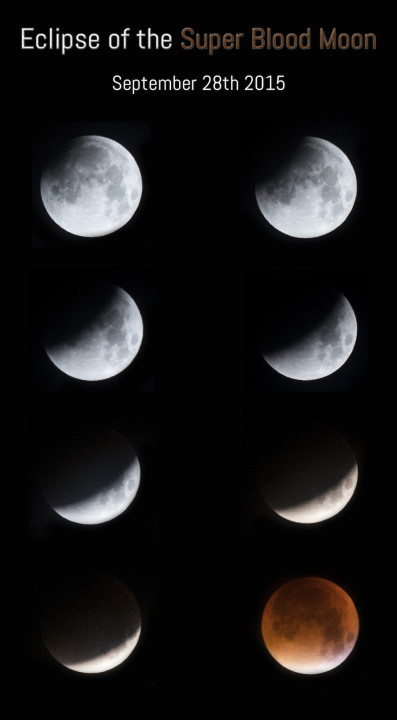
We also made good use of the GX8’s 4K Photo feature by taking a very basic 4K video clip from which we extracted an 8MP JPG. I was pleased to see how well the Vivid profile brought out the deep reds of the moon as it reached totality.
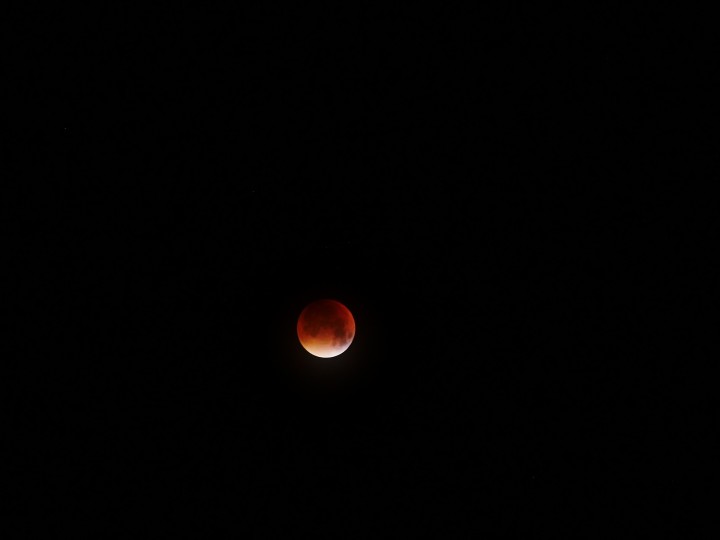
Did you manage to shoot the lunar eclipse? If so, please feel free to share your experience below!
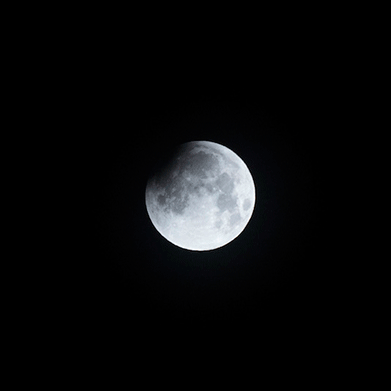
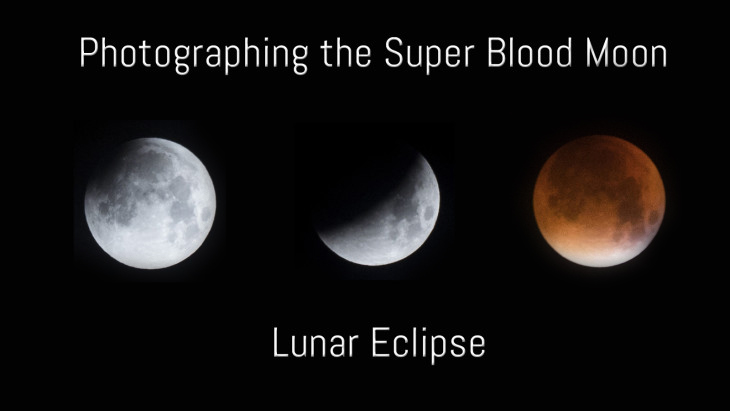
For a rough comparison “in the real [not of this] world,” here is what I shot at 200 mm on my GX7 using a Panasonic 45-200 f4-5.6 and a tripod. Shot from just outside Hayward, Wisconsin, USA. AF during the brighter beginning of the night, then switched to MF (which I clearly need to work on, haha). ISO 200 for most, but pushed to 1600 towards the end, not wanting to exceed 1s exposure times. Pretty minimal post-processing (mostly to adjust brightness), other than cropping and compiling, of course.
Tim, I really like depth your image conveys. Could you explain how you processed it to get that effect?
That is how I look at it as well, Heather. Not much I could do about the limited equipment anyway 🙂 Thanks for your kind words!
Thanks Heather! The 40-150 f2.8 is a great lens!
My contribution from Slovakia. Used my EPL-5 with 40-150mm f4.0-5.6 that came in the kit. Picture was taken on 150mm and f5.6. With a touch of post-process the result is not that bad 🙂
Just awesome, Paul. I love how much detail you captured. I really wish I’d had the 40-150 and teleconverter with me at the time, as I could have benefitted from the 2.8 aperture and the extra length. Oh well, there’s always 2033! 😉
The results aren’t bad at all considering how much you had to crop. The most important thing is that you captured the moment!
Thanks for sharing, Emmanuel! You’ve taken some excellent images.
Just beautiful, Howard. You have no idea how much I wanted the 40-150 in my bag that night!
This composite image of the lunar eclipse (which I shot from my home location near Frankfurt, Germany) was made using my Olympus EPL-5 camera with an Olympus 40-150mm f2.8 lens with 1.4x tele converter, so a 35mm equivalent focal length of 420mm. All the images were shot in RAW using a tripod and at constant f4 aperture. Depending on the moon’s phase,shutter speeds varied between 1/2500 sec and 1 sec and ISO settings 200 to 1000. Exposure mode was set to spot metering centred on the moon’s disc and autofocus was used for the brighter phase of the eclipse until it would not work and manual focus was required.
Thank you for the answer. I will made a behind the scene for a movie and I had a very good experience with the GX7, but the only use the viewfinder when the focus is not always accurate, so I thought at the GX8, besides that maybe the resolution can provide some extra time to print material.
I will search the another article about insects with the GX8.
And, as this forum is dedicated to mirrorless, I share with you this BTS made with NEX-5N and three cheap lenses: https://www.flickr.com/photos/45442267@N08/sets/72157658082700730
And this with GX7: https://www.flickr.com/photos/45442267@N08/albums/72157656594515803
In all honesty, not really. I actually prefer the ergonomics and size of the GX7. The biggest advantage of the GX8 in the real world is 4K Photo. Did you see my article about photographing insects in flight with this function?
A question, do you feel a improvement respect to the GX7 in the real world? I have GX7 and Im happy, but the GX8 look like a better camera.
We are in the process of moving overseas and almost all of my camera equipment is currently packed away and on a container ship. I only kept the bare minimum with me so I had to shoot the moon with my OM-D E-M5 without a tripod (hand-held and using a metal railing for support instead), just the Oly 45mm/f 1.8 lens, no remote shutter release either. The (cropped) picture definitely lacks detail and isn’t the best shot ever but considering the circumstances, I think the E-M5 with the 45 mm did a decent job.
I take it would be impossible to use the hi-rez mode on the olympus for this type of shot blood moon or any moon shot.
Nice shots tim difficult to judge what to expose for when half is very brightly illuminated and the other in shade
funny you used a similar approach to me using the gx8 but i had the olympus 40-150mm +tc which yielded a good result ,i also used iso 800 and vivid selection and used the 4x digital zoom,compared very well to my raw image which i cropped .
A beautiful result! Love it!
was a bit late and moon already came out of earth’s shade. so made two exposures to conquer the blown out highlights and still capture the bloody moon 😉 em5ii with 40-150/2.8+1.4TC. iso 200, f/4, 1s respectively 1/250. what do you think?
https://instagram.com/p/8KgLhkQ29D/
Absolutely. That’s why I switched over to the 35-100 and its 2.8 aperture. The 14-140 at 5.6 was useless once the reddish hue began to appear.
Aperture matters! I used my a6000’s cheap kit telezoom (55-210, f/6.3) and it’s not pretty. Color came through fine but I had to have such a long exposure that the celestial movement destroyed any detail. Still, it was fun and a neat thing to share with my wife.